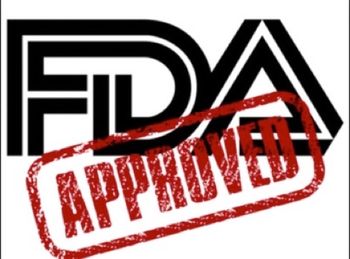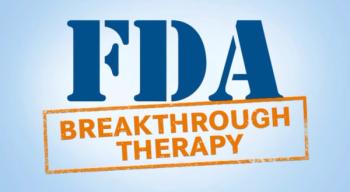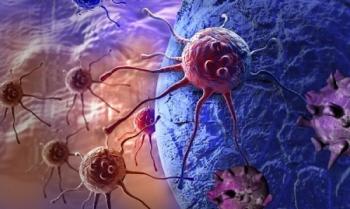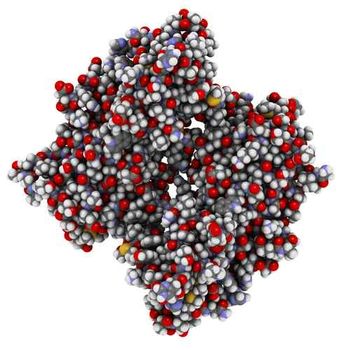
The COVID-19 pandemic will be felt in the oncology space long after the pandemic is over, study shows.

The COVID-19 pandemic will be felt in the oncology space long after the pandemic is over, study shows.

The CheckMate 9ER trial took 2 drugs used as monotherapies in the second line of therapy, nivolumab and cabozantinib, and combined them for use as a first-line treatment against standard of care, sunitinib.

More targeted therapies often have better toxicity profiles, allowing patients to remain adherent for longer.

Lenvatinib (Lenvima) plus pembrolizumab (Keytruda) showed early antitumor activity and tolerability in previously treated triple-negative breast cancer patients with advanced solid tumors.

Trial shows that olaparib, a poly ADP ribose polymerase inhibitor that is the first cancer drug to target an inherited genetic fault, can be used successfully to treat prostate cancers with a weakness in the ability to repair damaged DNA.

Adding abemaciclib to hormonal therapy reduces the risk of cancer recurrence by 25% in patients with high-risk early hormone receptor-positive human epidermal growth factor receptor 2-negative breast cancer.

Clinical education, strong data analytics, and valuing collaboration are the best ways to provide patient support and access to specialty pharmaceutical manufacturers.

Study shows the recurrence rate was within the expected range for breast cancer survivors receiving spironolactone and those who did not.

The COVID-19 pandemic has contributed to specialty pharmacy outpacing traditional pharmacy in non-discounted spending.

A new test may help direct treatments for patients with rare breast cancer mutations.

The CINtec PLUS Cytology assay is indicated for women who undergo cervical cancer screening and test positive for high-risk types of human papillomavirus.

Because regular SMS messaging is not fully HIPAA-compliant, one solution may be to initiate contact via a text that links to an online platform.

The keynote presentation will be broadcast virtually on 4 dates this fall and highlight cancer-specific guidance for pharmacists during the COVID-19 pandemic.

Buffalo Bills Hall of Fame quarterback Jim Kelly shared with specialty pharmacists his story of perseverance, tincluding his fight against squamous cell carcinoma in his upper jaw.

Magrolimab is a first-in-class, investigational anti-CD47 monoclonal antibody used in combination with azacitidine in treatment-naïve patients with high and very high-risk myelodysplastic syndrome,

Understanding the role of abemaciclib (Verzenio) in managing patients with hormone receptor positive and human epidermal growth factor receptor 2 negative metastatic breast cancer is crucial.

It may take cells in different stages of development to cause breast cancer to progress and spread, according to recent research published in eLife.

Amid rising cancer care costs, a focus on chemotherapy stewardship may result in cost savings, according to a session of the HOPA Practice Management 2020 Virtual Learning Event.

The FDA grants fast track designation to the highly-selective N-terminal domain inhibitor EPI-7386 for the treatment of adult patients with metastatic castration-resistant prostate cancer.

Bristol Myers Squibb announced it will present data from research spanning 15 different cancers with high unmet need at the ESMO Virtual Congress 2020.

Figuring out how to target vulnerable cells in breast cancer tumors can help treat the disease more effectively.

In a phase 3 clinical trial, oral paclitaxel was found to be just as effective intravenous paclitaxel in metastatic breast cancer.

The current study found no link between personal use of permanent hair dye and the risk of most cancers or cancer-related mortality.

The FDA also granted priority review to pralsetinib for the treatment of patients with advanced or metastatic RET-mutant medullary thyroid cancer and RET fusion-positive thyroid cancer.

In a virtual symposium titled Clinical Updates in Extensive-Disease Small Cell Lung Cancer: A Primer for Pharmacists Caring for Patients, 2 expert speakers discussed pivotal changes in the treatment landscape for small cell lung cancer.

A patient has Lynch syndrome, a hereditary condition that puts young people at high risk for colon cancer.

In a Pharmacy Times® webcast, Katie Culos, PharmD, BCOP, a specialist in cellular therapy and hematology discussed with Katherine Lin, PharmD, BCPS, BCOP the many policies and procedures that have been implemented during the COVID-19 pandemic by providers for cancer care.

A first-in-class targeted therapy, VB-111 is administered by intravenous infusion once every 6 to 8 weeks.

Many patients battling cancer are in dire need of support, encouragement, and care coordination.

Optimizing the best pharmaceutical agent while minimizing adverse effects is paramount in patients with cancer-associated venous thromboembolism.